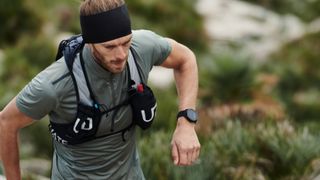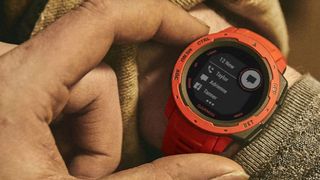2022 fitness hedeflerinize yardımcı olacak bir koşu saati arıyorsanız, fitness giyilebilir ürünlerinde en ileri noktadasınız demektir. En iyi koşu saatleri, teknik olarak en gelişmiş, en etkileyici ve en pahalı giyilebilir ürünler arasındadır. GPS, biyometri ve hızlandırdığınız verilerle ilgili yapay zeka güdümlü içgörüler sunan uygulamalardan bahsediyoruz.
Ancak bu kadar çok koşu saati mevcutken doğru kararı vermek zor olabilir. Zaten bir çift en iyi koşu ayakkabısına sahip olabilirsiniz , ancak işte size doğru koşu saatini nasıl seçeceğiniz.
1. Koşu saatinin tam olarak ne olduğunu bilin
We’re not counting steps here. That’s for smartphones, smart watches and fitness trackers that are more about casual encouragement and looking good. Running watches – also referred to as GPS watches and multisport watches – must be altogether more obsessed with accuracy and performance. Cue GPS-powered location-tracking that removes the guesswork for calculating distances, and a host of sensors to measure biometrics.
Heart rate monitoring is by now a default feature that helps you exercise at the right intensity while an incoming feature is a measurement of blood oxygen (SpO2) levels. The latter is nice to have as a general measurement of fitness, but only of practical use on the move if you’re going to be hiking or climbing at high altitudes, or free diving, though marathon runners may also find it handy.

Almost all running watches support multiple activities, but many higher-end running watches also feature dedicated triathlon modes, which track entire events without you having to record the bike ride, swim, and run separately.
2. Think about what kind of athlete you are
Do you need a running watch? If you go for the occasional jog and just want to keep track of how much you move, think about investing in a fitness tracker or a smart watch. If, however, you’re a regular runner, cyclist or triathlete and are hell-bent on improving then a running watch is for you.
What you’re likely to notice if you’re stepping-up from a Fitbit or a smartphone app to a running watch is data. In place of the simple algorithms, step-counting and an obsession with reaching 10,000 steps you’ll find multi-sport modes, cadence sensors, stride length calculators, heart rate monitors and compatibility with third-party sensors like chest-strap heart rate monitors and foot pods. Running watches that are focused all and only on running include the insight-packed Coros Apex and the Polar Vantage V2, the latter of which adds a regular fitness test to establish your benchmark.
3. Understand the value of GPS and alternatives
Do you know where you are with navigation? GPS has become a byword for satellite navigation, but the US-built Global Positioning System is but one of several around the world.
They all work the same way, with a receiver inside a running watch tuning-in to radio signals from networks of orbiting satellites. Using signals from four satellites a receiver can triangulate to produce your position on the planet every few seconds and to within a few metres.
You’ll often see running watches advertised as being compatible with GLONASS (Global Navigation Satellite System), which is a Russian-run system that’s slightly more accurate than GPS, the EU-owned Galileo, Japan’s QZSS (Quasi-Zenith Satellite System) and China’s BDS (BeiDou). You don’t need a running watch that supports all of them, but it’s wise to have access to two satellite systems because more satellites will be available at any given time.

Why does a running watch need satellite navigation? Although many have maps and wayfinding features, it’s primarily to track exactly how far you’ve run. It’s way more accurate than the algorithms used in fitness trackers. The drawback, of course, is that satellite navigation requires considerable battery power, so if that’s your biggest concern then get a running watch that offers power saving modes, though understand that they do reduce accuracy by less frequently picking-up the signals from navigation satellites.
4. Get to know the big brands
The big players in the multi-sports watch genre include brands like Garmin, Polar, Suunto, Coros and Amazfit. However, even within these brands are some drastically different products that are priced accordingly. For example, Garmin’s flagship is the Garmin Forerunner 945 and will suit most runners very well, though the much pricier and chunkier Garmin Fenix 6 is the best choice for anyone also indulging in hiking, swimming and skiing. So is the Coros Vertix, which can survive freezing conditions and lasts 60 hours in GPS mode.
You can just about squeeze in Fitbit and Apple, too, though the Fitbit Charge 4 and Apple Watch 6 – while good for beginners – lack the advanced tracking metrics of a ‘proper’ running watch.

5. Consider battery and brightness
Battery life is also important since incessant recharging between workouts can get irritating. Can your running watch recharge via the same USB-C cable you use for your smartphone? Or are you going to have to introduce an ugly (and highly lose-able) proprietary charging cradle into your digital life? Choose accordingly.
A direct consequence of battery life is how much its satellite navigation mode sucks that battery dry, and also how bright the display can go, which is crucial in sunshine. While some running watches offer bright backlit AMOLED screens others have transflective memory-in-pixel (MIP) tech, which boosts brightness on a sunny day. Some running watches – like the Garmin Instinct Solar – use photovoltaic glass to give them a solar power boost.
6. Size up the physical differences
Koşu saatlerinin hepsi aynı görünmüyor ve bileğinize takıldığında aynı hissi vermiyor. Yeni başlayanlar için, ağırlıkları farklıdır, en hafif koşu saati sadece 29g olan Coros Pace 2'dir . Genel tasarım hakkında da düşünmeye değer çünkü bir koşu saati, yalnızca antrenmanlar için bileğinize takılacak bir cihaz gibi görünse de, gerçek şu ki, sizin de fiili kol saatiniz olacak.
Tüketici akıllı saatlerinde dokunmatik ekranlar sıklıkla bulunsa da, hareket halindeyken fiziksel düğmeleri çalıştırmanın çok daha kolay olduğunu da dikkate almakta fayda var. Kışın koşarken eldiven takıyorsanız bu özellikle doğrudur.

7. Verilerinizi ve bunların nasıl ele alındığını düşünün
Bir koşu saatinin ürettiği verilerin iki yönü vardır: ilerlemeniz ve hedefiniz hakkında sizi bilgilendirmek için koşarken saat kadranında gördükleriniz ve daha sonra ilerlemenizi izlemenize ve planlamanıza yardımcı olmak için sağlanan veriler. gelecek egzersizler. İkincisi, koşu ölçümlerinizi kaydetme ve dinlenme durumunuzu çizme eğiliminde olan uygulamalara bağlıdır. Ayrıca egzersiz yükünüzü yöneten yapay zeka destekli uygulamalar bulacaksınız. Yıllardır Strava veya MyFitnessPal gibi uygulamaları kullanan koşucular için daha da önemlisi, koşu saatinizin verilerinin bunlara da akmasına izin vermesidir.
8. Ekstra özellikler olup olmadığını kontrol edin
Koşu saatlerinin çoğu, temel görevlerinin ötesine geçer. Örneğin, bazı Garmin koşu saatleri, çevrimdışı müzik desteği, Spotify kontrol desteği ve kablosuz kulaklıklarla eşleştirme , çevrimdışı adet döngüsü izleme, haritalar ve hatta Garmin Pay içerir;
WhatsApp mesajları ve sosyal medya güncellemeleri gibi akıllı telefon bildirimleri, umutsuzca isteyebileceğiniz veya tamamen kaçınmaya istekli olabileceğiniz birçok koşu saatine yönlendirilebilir.

Bu makale, TechRadar'ın 2022'de Fit Ol serisinin bir parçasıdır - mevcut zindelik seviyeniz ne olursa olsun, yeni yılın sağlık hedeflerinize doğru bir başlangıç yapmanıza yardımcı olacak bir fikir ve kılavuz koleksiyonu.
- Ayrıca en iyi yüzme saatlerini test ettik ve sıraladık
